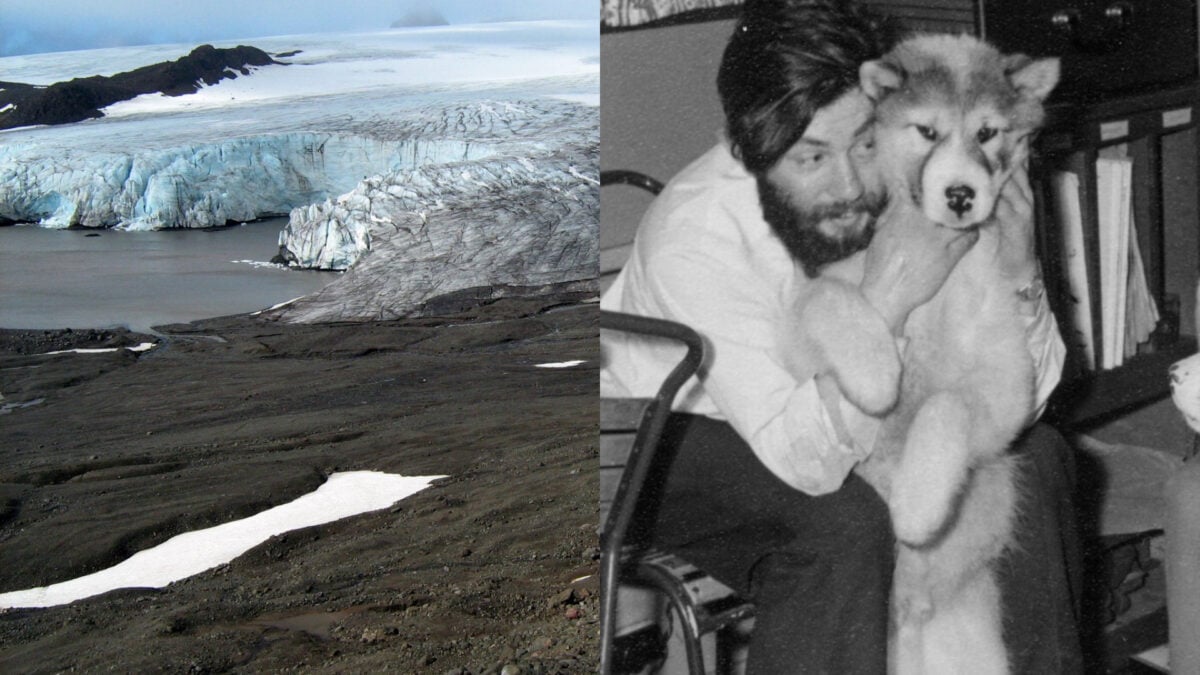Glacier Melt Reveals Remains of Antarctic Meteorologist Lost 66 Years Ago

In 1959, 25-year-old meteorologist Dennis Bell disappeared into a glacial crevasse in the Antarctic before the eyes of his horrified colleague. 66 years later, a Polish team has finally discovered his remains in the wake of a receding glacier.
Personnel from the Henryk Arctowski Polish Antarctic Station on Antarctica’s King George Island first found and recovered some of the remains on the Ecology Glacier in January, according to a statement by the British Antarctic Survey (BAS). The following month, a team including an archaeologist, geomorphologist, anthropologist, and glaciologist returned to the site to conduct a more thorough archaeological survey. Denise Syndercombe Court, a forensic geneticist at King’s College London, conducted DNA tests of the human remains, which matched with samples from Bell’s brother and sister.
“When my sister Valerie and I were notified that our brother Dennis had been found after 66 years we were shocked and amazed,” David Bell said in the statement. “The British Antarctic Survey and British Antarctic Monument Trust have been a tremendous support and together with the sensitivity of the Polish team in bringing him home have helped us come to terms with the tragic loss of our brilliant brother.”
Dennis Bell joined the Falkland Islands Dependencies Survey (FIDS, the predecessor of BAS) as a meteorologist in 1958. At the time of the accident, he was stationed at Admiralty Bay, a UK base on King George Island. King George Island is around 74.6 miles (120 kilometers) off the northern coast of the Antarctic Peninsula, and its peak is permanently covered in glaciers. On 26 July 1959—the middle of the southern hemisphere’s winter—Bell and three colleagues with two dog sledges climbed a glacier to conduct fieldwork.
The group split into pairs, and Bell and surveyor Jeff Stokes set off before the others. During the ascent, Bell moved ahead of the sledge without his skis to encourage the tiring dogs and disappeared into a crevasse. Bell survived the fall, however, and Stokes threw a rope down to him to pull him back up. Bell, however, had tied the rope around his belt rather than around himself. When his body reached the top of the crevice, he got stuck, the belt broke, and this time he fell to his death.
Of Ice and Men, a book by former BAS director Vivian Fuchs, describes the event as “a particularly tragic fatality which one really felt should never have happened, and thus doubly grievous,” as cited in the statement.
Researchers discovered his remains along with over 200 personal items, including the remains of radio equipment, ski poles, a flashlight, an inscribed wristwatch, and a Swedish Mora knife. Bell Point on King George Island is named in his honor.
“Even though he was lost in 1959, his memory lived on among colleagues and in the legacy of polar research,” said BAS director Jane Francis. “This discovery brings closure to a decades-long mystery and reminds us of the human stories embedded in the history of Antarctic science.”








